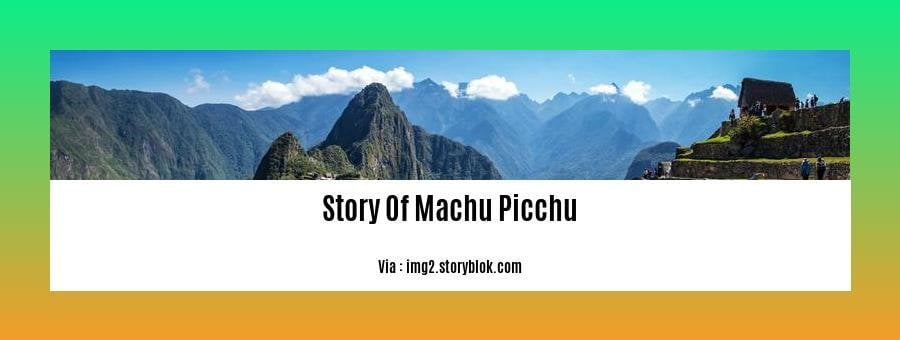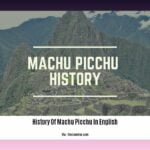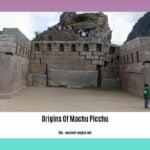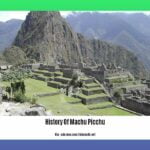Embark on an extraordinary journey to [- Unveiling the Story of Machu Picchu], where ancient mysteries intertwine with breathtaking natural beauty. Through our comprehensive guide, you’ll step back in time and explore the origins, legacy, and architectural marvels of this iconic Inca citadel. Experience the allure of this enigmatic city, nestled amidst the towering Andes, as we reveal its captivating story.
Key Takeaways:
- Machu Picchu was a royal estate or sacred religious site, built by Inca ruler Pachacutec in the mid-1400s.
- It was abandoned a century later at the time of the Spanish conquest.
- Today, archaeologists believe it served either as a royal estate or a religious site.
Story Of Machu Picchu
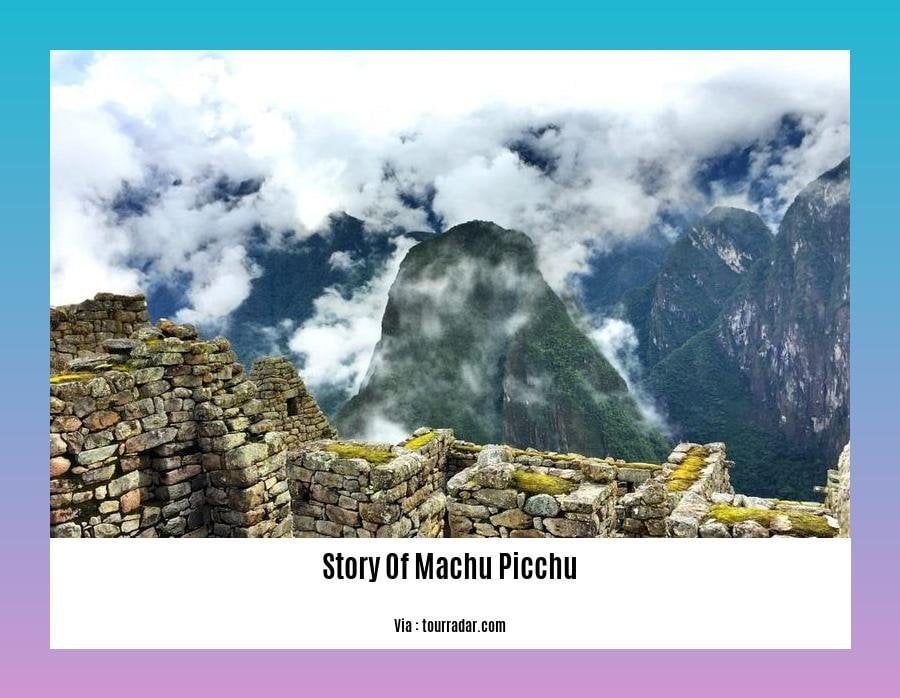
Nestled amidst the towering Andes Mountains in Peru, Machu Picchu is an ancient city that has captivated the world with its enigmatic beauty and historical significance. Its story is a captivating tale of architectural prowess, cultural heritage, and enduring legacy.
Birth of a Citadel
Machu Picchu was constructed in the mid-1400s by the Inca ruler Pachacutec as a royal estate or a sacred religious site. Its construction was a testament to the Incas’ architectural ingenuity. Masterfully crafted stone structures, intricate terraces, and sophisticated irrigation systems harmoniously blended with the breathtaking landscape.
A Place of Mystery and Wonder
The purpose of Machu Picchu remains a subject of debate. Some believe it was a royal sanctuary, a retreat for Inca emperors and their entourage. Others propose it was a religious center, a place of pilgrimage and spiritual significance. Archaeological evidence suggests it housed priests, artisans, and other elite members of Inca society.
Rediscovery and Recognition
Machu Picchu lay hidden from the world until American explorer Hiram Bingham stumbled upon it in 1911. Its rediscovery sparked global fascination and prompted extensive research and conservation efforts. In 1983, UNESCO recognized Machu Picchu as a World Heritage Site, solidifying its status as a cherished cultural treasure.
A Timeless Legacy
Despite its abandonment a century after its construction, Machu Picchu’s legacy endures. Its remarkable architecture, stunning location, and evocative history continue to inspire awe and wonder. Today, it stands as a symbol of Inca civilization and a testament to the ingenuity and artistry of our ancestors.
A Journey into the Past
For travelers seeking an unforgettable experience, the Story Of Machu Picchu beckons. Trek along the Inca Trail, marveling at the surrounding landscapes that the Incas traversed centuries ago. Explore the ruins, immerse yourself in its ancient culture, and unravel the mysteries that have captivated generations. Machu Picchu is a living testament to history’s enduring power, a timeless allure that continues to enchant travelers from around the world.
Learn more about the fascinating history of Machu Picchu, a UNESCO World Heritage Site and one of the most iconic landmarks in the world.
If you’re curious about the origins of Machu Picchu, an intriguing Inca citadel hidden in the Peruvian Andes, delve into the enlightening origins of Machu Picchu article.
Discover the intriguing history behind Machu Picchu’s construction and its significance as an important Inca ceremonial and religious site in History of Machu Picchu in English.
Inca Life and Culture at Machu Picchu
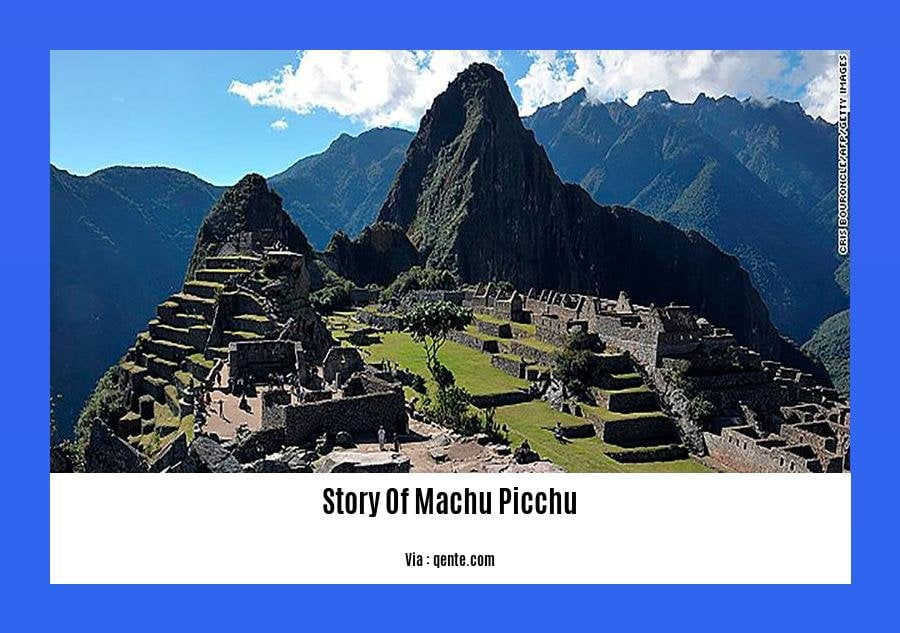
Nestled amidst the towering Andes Mountains, Machu Picchu is a testament to the architectural prowess and cultural legacy of the Inca civilization. Its intricate stone structures, terraced landscapes, and secluded location offer a glimpse into the daily lives and spiritual beliefs of the Inca people.
In the Shadow of the Sun God
The Inca believed Machu Picchu to be a sacred site dedicated to the Sun God, Inti. Its location at 2,430 meters above sea level provided a sanctuary away from the bustling Inca capital of Cusco. The city’s layout reflects their reverence for nature, with temples, palaces, and agricultural terraces harmoniously integrated into the surrounding environment.
A Window into Inca Society
Excavations reveal that Machu Picchu was inhabited by a diverse community of elites, priests, artisans, and workers. The city’s sophisticated irrigation system, storage facilities, and well-planned streets suggest a well-organized society with a focus on agriculture and trade.
Rituals and Festivals
Machu Picchu was the stage for elaborate religious ceremonies and festivals. The Inti Raymi, or Sun Festival, held in June, was the most significant event. Thousands of Inca pilgrims would gather at the site to pay homage to Inti and celebrate the summer solstice.
Key Takeaways:
- Machu Picchu was a sacred city dedicated to the Sun God, Inti.
- The city housed a diverse community of elites, priests, artisans, and workers.
- Machu Picchu’s sophisticated architecture and infrastructure reflect Inca ingenuity and societal organization.
- The site was a center for religious rituals and festivals, including the Inti Raymi.
Relevant URL Sources:
- Intrepid Travel Blog
- National Geographic
Rediscovery and Exploration of Machu Picchu
In 1911, the world was introduced to the breathtaking ruins of Machu Picchu, a testament to the ingenuity and architectural prowess of the Inca civilization. Nestled amidst the lush Peruvian Andes, this ancient city lay forgotten for centuries, until its rediscovery by American explorer Hiram Bingham III.
Key Events:
- 1911: Hiram Bingham III rediscovers Machu Picchu during his quest to locate Vilcabamba, the last Inca stronghold.
- 1983: UNESCO designates Machu Picchu as a World Heritage Site, recognizing its cultural and historical significance.
- 2007: Machu Picchu is named one of the New Seven Wonders of the World, solidifying its status as a global icon.
Exploration and Significance:
Machu Picchu’s exploration has shed light on the remarkable skills of the Inca people. Its intricate stone structures, terraces, and irrigation systems showcase their architectural mastery. The site’s purpose remains a subject of debate, with theories ranging from a royal retreat to a religious sanctuary.
The discovery of Machu Picchu has allowed us to glimpse into a bygone era, immersing us in the history and culture of one of the world’s most advanced civilizations. Its ruins stand as a testament to human ingenuity and the enduring legacy of the Inca Empire.
Sources:
– https://www.historydaily.com/the-rediscovery-of-machu-picchu
–
Machu Picchu Today: Preservation and Tourism
Machu Picchu Today: Preservation and Tourism
As a historical landmark and popular tourist destination, Machu Picchu faces the dual challenge of preserving its heritage while accommodating the demands of tourism. Recognizing the need for a delicate balance, Peruvian authorities and international organizations have implemented measures to ensure Machu Picchu’s enduring legacy while supporting sustainable tourism practices.
Preservation Efforts
- Restricting Access: Visitor numbers are limited, and certain areas are off-limits to prevent damage and erosion.
- Renovation and Maintenance: Ongoing restoration projects aim to preserve the site’s architectural integrity while respecting its historical significance.
- Environmental Care: Programs focus on protecting the surrounding ecosystem, including reforestation and responsible water management.
Sustainable Tourism
- Regulated Tourism: Permits and guided tours ensure responsible visitor behavior and minimize the impact on the site.
- Local Involvement: Communities near Machu Picchu benefit from tourism revenue through employment and cultural preservation initiatives.
- Responsible Travel: Visitors are encouraged to respect the site’s cultural significance, minimize their environmental footprint, and support local businesses.
Key Takeaways:
- Machu Picchu’s preservation and tourism are carefully balanced to protect the site’s heritage and support sustainable economic growth.
- Restricting access, promoting responsible tourism, and engaging local communities safeguards Machu Picchu’s integrity and cultural significance.
- Responsible visitors can explore Machu Picchu while respecting its history and contributing to its preservation.
Relevant URL Sources:
- Machu Picchu Travel Guide
- How Machu Picchu is being preserved for future generations
FAQ
Q1: When was Machu Picchu built?
A1: Machu Picchu was constructed in the mid-1400s by the Inca ruler Pachacutec.
Q2: Who discovered Machu Picchu?
A2: American archaeologist Hiram Bingham discovered Machu Picchu in 1911.
Q3: What is the purpose of Machu Picchu?
A3: The precise purpose of Machu Picchu is unknown, but it may have been a royal retreat or a religious site.
Q4: Is Machu Picchu a UNESCO World Heritage Site?
A4: Yes, Machu Picchu has been a UNESCO World Heritage Site since 1983.
Q5: How many people hike the Inca Trail to Machu Picchu each year?
A5: Over 75,000 people hike the Inca Trail to Machu Picchu each year.
- Amazing March Fun Facts: Unveiling History & Celebrations - April 15, 2025
- Master how to write height: A complete guide - April 15, 2025
- How High Are Your Standards Test: Find Your Perfect Match Now - April 15, 2025
